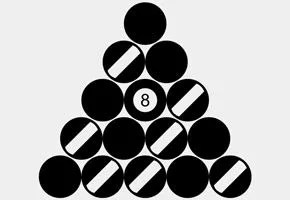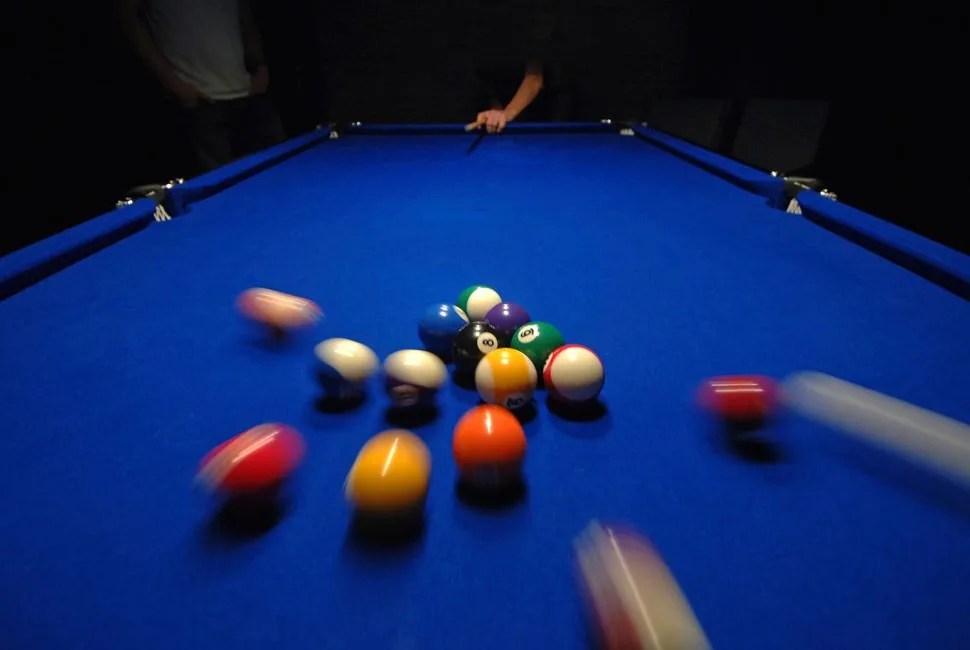Being loud is usually obnoxious, but when it comes to the break in billiards, it’s completely necessary. No one is guaranteeing you’ll have Tom Cruise’s “sledgehammer break” from The Color of Money (more likely you’ll end up ripping a hole in the table), but perfecting a good break isn’t as difficult as it looks. Below is a short guide to breaking in 8-ball — if you’re playing 9-ball, you probably don’t need a guide.
1 Don’t break your shaft. The speed and power necessary for a good break make it an easy way to bend or utterly destroy your pool cue. For increased speed, most players use a separate, lighter cue for breaking. Grab the house cue off the wall and chalk the tip — it’s probably already been through hell anyway.
2 Allow me to break the ice. You want the rack to be frozen — meaning all the balls are touching each other — otherwise half the balls won’t move.
NICE RACK

According to the World Pool-Billiard Association, the 15-ball rack should be packed as tightly as possible, with the front ball resting on the “foot spot” — usually an adhesive marker at the center point of half the table (mirroring the head spot). The base of the triangle rack must have one striped and one solid ball on either corner and be parallel to the end rail, with the 8-ball in the center of the third row. Other than that, just try for a random ordering (so one player’s balls aren’t unfairly clustered together after the break) and you are ready to roll.
wpa-pool.com
3 Spot the ball, form your bridge. Even among professionals, the spot of the cue ball varies widely. Some place it on the head spot (the center point of the half of the table from which you break, a.k.a. that little dot that’s probably worn to shit), others a few inches off the rail (the padded wall enclosing the playing area). As long as it’s on or behind the head string (the midline running the width of the breaking half, you need a damn glossary for this game), it’s really up to you. Just place it where you’re most comfortable and where you’ll avoid scratching off the break (pocketing the cue ball and losing a turn). If you can, use a closed bridge — in which your index finger wraps around the pool cue — in order to keep the cue from pulling up during the shot.
